When it comes to choosing an SUV, prospective buyers tend to focus on factors such as engine performance, fuel efficiency, interior space, technology features, and safety ratings.
However, one often overlooked yet crucial aspect of overall vehicle comfort is the behavior of the heating, ventilation, and air conditioning (HVAC) system, especially the noise it produces during startup.
For many drivers and passengers, the subtle sounds of HVAC activation can significantly influence the perceived quality and refinement of a vehicle’s cabin. While some SUVs deliver virtually silent HVAC startups that blend seamlessly into the quiet hum of the vehicle, others have noisy blowers that can detract from the driving experience.
The HVAC system plays a vital role in maintaining a comfortable environment inside the cabin, whether it’s warming up on a chilly morning, cooling down on a scorching day, or simply circulating fresh air.
The moment the HVAC blower motor springs to life, it sets the tone for cabin comfort. A smooth, quiet startup can make the difference between a serene, luxury-like ambiance and a harsh, industrial atmosphere.
Noise from HVAC blowers often comes from the type of motor used, the design of the air ducts and vents, the quality of sound insulation materials, and the software controlling blower speed changes. Understanding these factors is key to appreciating why some SUVs feel more refined than others when their climate control systems activate.
This article explores two sides of this HVAC noise spectrum by highlighting five SUVs that boast some of the quietest HVAC startups in the industry, followed by five SUVs known for their noisier blower systems.
The quietest HVAC systems typically feature advanced brushless motors, carefully engineered ductwork to minimize airflow turbulence, and robust cabin soundproofing. In contrast, noisier systems tend to rely on older motor designs, have less optimized airflow pathways, or lack sufficient noise-dampening measures, leading to audible mechanical whines, buzzing, or rattling during startup.
For the quiet HVAC performers, brands like Lexus, Audi, Volvo, Acura, and BMW have invested heavily in the acoustic engineering of their SUVs’ climate control systems. Their vehicles provide a calming, almost imperceptible transition from silence to airflow, enhancing the overall sense of luxury and driver satisfaction.
These manufacturers employ innovations such as electronically commutated motors, acoustic lining materials in ducts, and intelligent ramp-up algorithms that ensure the blower starts gently without sudden noise spikes. Their attention to noise, vibration, and harshness (NVH) factors goes beyond the HVAC system to encompass the entire cabin, creating an environment where even subtle sounds are finely controlled.
On the other hand, popular models like the Jeep Grand Cherokee, Ford Explorer, Nissan Pathfinder, Chevrolet Traverse, and Dodge Durango have faced criticism for louder HVAC blowers during startup. In these vehicles, the use of traditional brushed motors, rigid duct designs, and less comprehensive insulation contributes to noisy blower operation.
The resulting mechanical hums, vibrations, and airflow whistles can disrupt the quiet needed for peaceful conversations or relaxing drives. Moreover, abrupt blower speed changes driven by less sophisticated climate control software often exacerbate the noise, especially when rapid temperature adjustments or defrost cycles are engaged.
Beyond mere comfort, HVAC noise levels can subtly influence a buyer’s perception of a vehicle’s quality and refinement. Quiet HVAC startups signal advanced engineering and attention to detail, which are hallmarks of luxury and premium segments.
Conversely, noisy blowers may create an impression of cost-cutting or aging design, even if the vehicle excels in other areas. In daily use, occupants who regularly experience HVAC noise might find it tiring or annoying, especially during long trips or stop-and-go traffic where frequent HVAC cycling occurs.
By delving into the mechanical and acoustic reasons behind quiet and noisy HVAC startups, this article aims to inform consumers and enthusiasts about an aspect of vehicle comfort that often goes unnoticed until it becomes a problem. Whether you prioritize a tranquil cabin or simply want to understand what makes some SUVs stand out for their quiet HVAC operation, this guide provides valuable insights into the technology and design choices that shape your driving experience.
ALSO READ: 5 Reliable Brake Systems and 5 That Constantly Wear Out
5 SUVs with the Quietest HVAC Startups
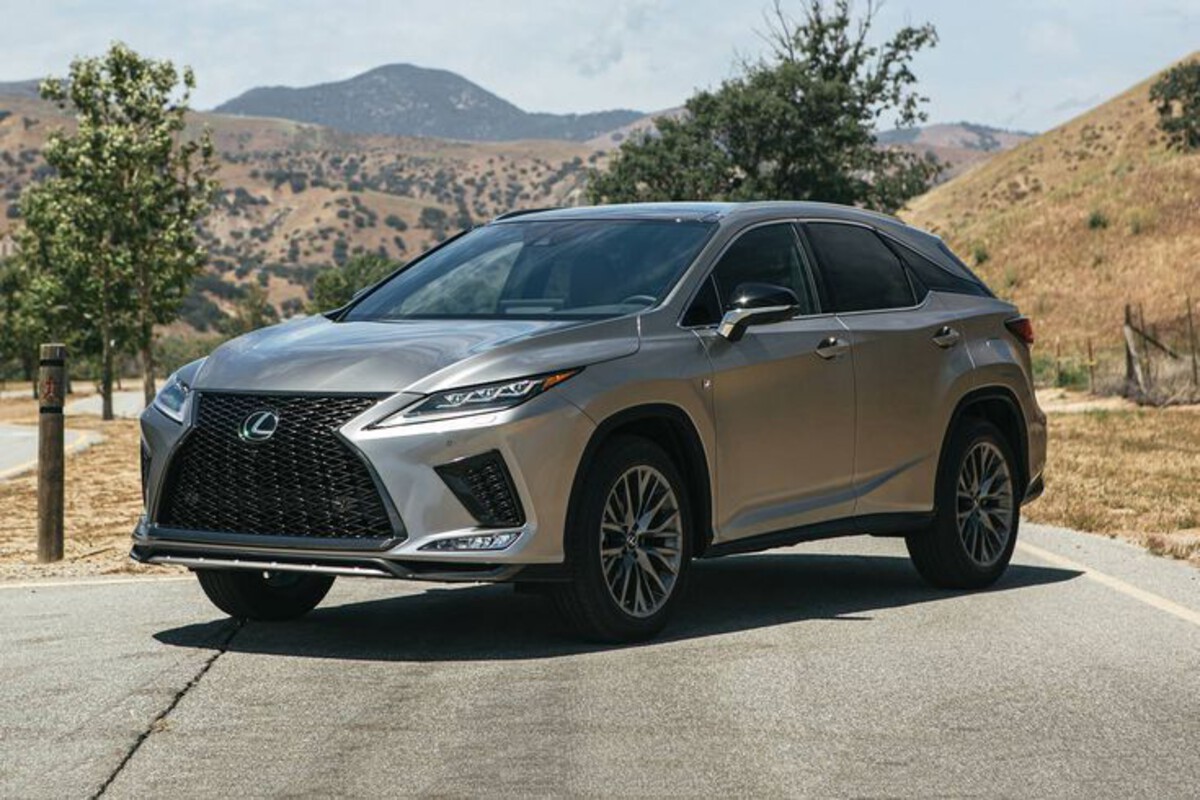
1. Lexus RX Series
Lexus has cultivated a reputation for unmatched luxury and exceptional attention to detail, and this extends to the RX series’ HVAC system. The moment the HVAC system powers on, the cabin remains enveloped in near silence, showcasing the brand’s dedication to providing a serene driving environment.
The RX’s blower motor employs brushless electric motor technology, which significantly reduces mechanical friction and noise during startup compared to traditional motors. This technical refinement allows the motor to accelerate smoothly without the abrupt sounds associated with older systems.
Moreover, Lexus engineers have designed the blower housing with dense sound-absorbing materials, effectively muffling any residual noise. This creates a feeling that the airflow is gently introduced into the cabin, rather than forced in noisily.
Beyond just the motor, the ductwork and vents are shaped to minimize air turbulence, which can generate high-pitched whistles or whooshing noises during startup or changes in blower speed. Lexus uses acoustic foam lining and flexible, vibration-absorbing materials around these components, which dampen both mechanical and airflow sounds.
This engineering is complemented by the RX’s cabin insulation—multi-layered glass, thick carpets, and specialized acoustic panels all work to isolate the interior from exterior noise, but also help contain and mute any sounds produced by internal systems like the HVAC. The synergy between motor technology, duct design, and cabin insulation is key to the RX’s quietly efficient climate control.
Furthermore, the RX is equipped with an intelligent climate control system that uses gradual ramp-up algorithms to avoid sudden noise bursts. Instead of blasting air at full force right away, the blower modulates gently, adapting its speed smoothly to the set temperature and cabin conditions.
This approach not only reduces noise but also enhances energy efficiency and passenger comfort. In colder climates or on hot days when the HVAC system may need to cycle frequently, this softness in operation is especially noticeable and appreciated by drivers and passengers alike.
Lastly, Lexus’ rigorous testing for Noise, Vibration, and Harshness (NVH) during the RX’s development involves thousands of hours in both simulated and real-world environments to ensure all systems, including HVAC, meet strict noise criteria.
This results in a system that feels deliberately crafted rather than an afterthought. The RX’s quiet HVAC startup exemplifies Lexus’s philosophy of delivering not only performance and reliability but also an elevated sensory experience where even subtle sounds are controlled to preserve cabin tranquility.
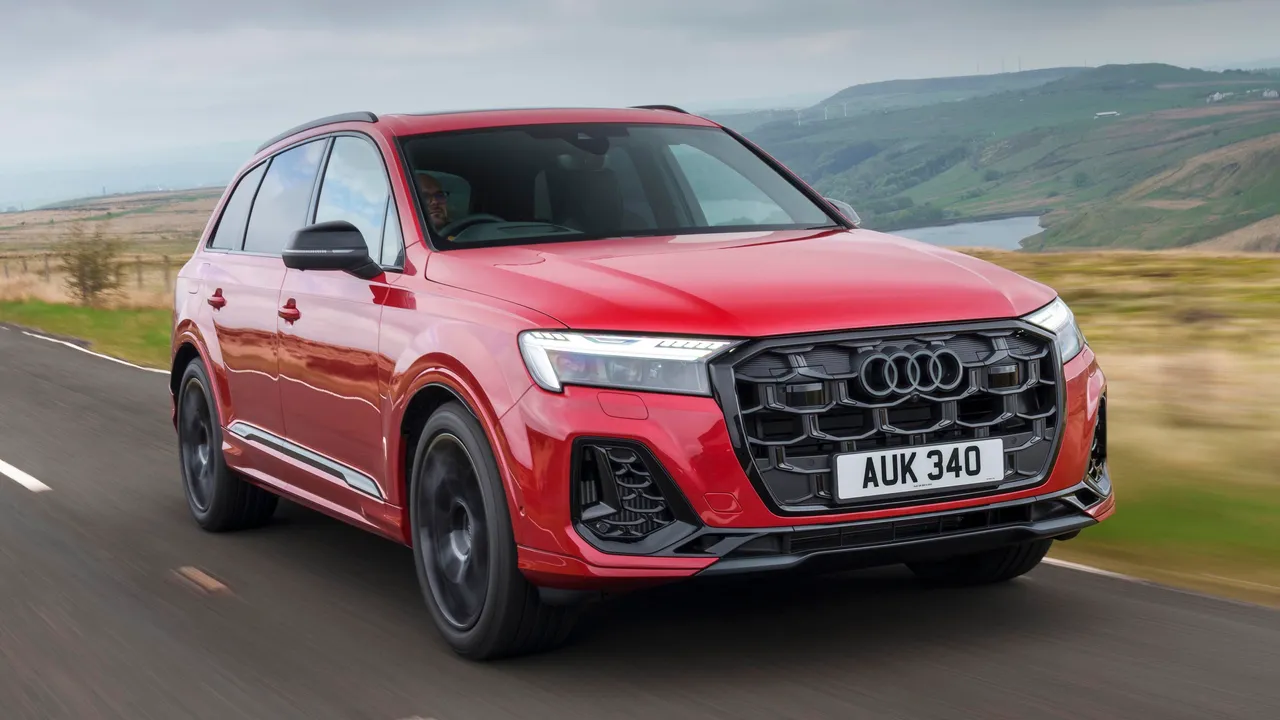
2. Audi Q7
The Audi Q7 is a standout in the luxury SUV segment, largely because of its meticulous engineering focus on delivering a refined, quiet cabin experience. Audi’s approach to minimizing HVAC startup noise begins with the use of electronically commutated motors (ECMs) that spin with precise, smooth rotations.
Unlike brushed motors, ECMs avoid the sparking and friction that can create mechanical noise. This allows the blower motor to come online with minimal disturbance, making the sound almost imperceptible during startup. The use of ECMs also extends to improved energy efficiency and longevity, meaning the system remains quiet and effective over many years of ownership.
Another critical factor in the Q7’s quiet HVAC startup is the aerodynamic design of the air ducts. Audi employs computational fluid dynamics (CFD) to shape the vents and ducts in ways that reduce air turbulence, a common culprit behind whistling and hissing noises.
The ducts are lined with specialized acoustic foams and wrapped in vibration-damping materials, which further smooth airflow and prevent rattling noises that can arise when the blower motor engages. Audi’s engineers pay close attention to the seams and joints in these systems, sealing them meticulously to avoid leaks that can amplify noise.
The Q7’s multi-zone climate control system plays a vital role in managing blower speed and noise. By allowing occupants to control temperatures independently, the system avoids unnecessary high blower speeds that might otherwise cause loud airflow sounds.
This distributed approach means the blower motors often operate at lower, quieter speeds, with gradual ramp-up controlled by intelligent software algorithms. This results in a climate control startup that feels natural and unobtrusive, supporting Audi’s brand promise of a premium driving experience.
Audi also integrates NVH strategies across the entire vehicle, with sound-absorbing materials in the dashboard, floor, and headliner that complement the quiet HVAC system.
The result is a harmonious interior where the HVAC startup noise blends seamlessly into the background hum of the vehicle, making it difficult to distinguish when the system activates unless specifically paying attention. This level of refinement reinforces the Q7’s status as a flagship SUV where comfort and quietness are paramount.
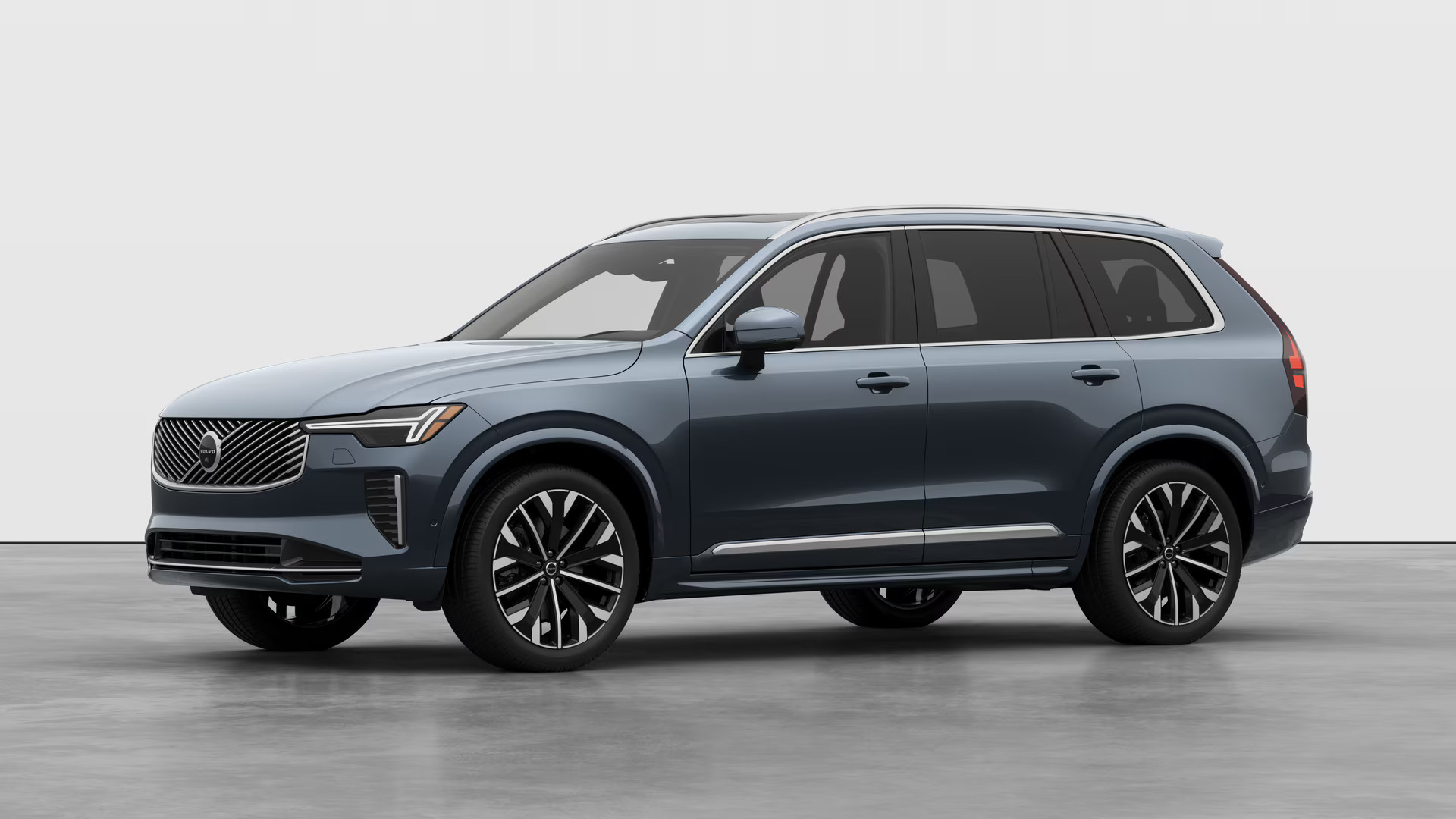
3. Volvo XC90
Volvo’s XC90 embodies the brand’s Scandinavian heritage of minimalist design, safety, and comfort. One of the defining qualities of the XC90’s interior is its quietness, especially notable when the HVAC system powers on. The system uses electronically controlled brushless motors that start up with a nearly imperceptible hum.
These motors reduce electrical noise and mechanical vibration, which are common sources of HVAC noise in less sophisticated systems. Volvo combines this technology with precision engineering in the blower housing to ensure that noise generated by the motor’s internal components is isolated and absorbed.
In addition to motor technology, Volvo’s commitment to smooth airflow is evident in the design of the HVAC ducts and vents. The ducts have smooth, curved passages to minimize turbulence and prevent whistling noises. To further enhance acoustic performance, Volvo uses multi-layer acoustic insulation materials inside the ducts and surrounding components.
This insulation not only absorbs mechanical noise but also reduces the propagation of airflow sounds, which are particularly noticeable at blower startup when air velocity changes suddenly.
The XC90’s advanced climate control system features sensors that continuously monitor cabin air quality and temperature, adjusting blower speed dynamically. This intelligent system ensures that the blower operates at the lowest speed necessary to maintain comfort, reducing noise output during startup and ongoing operation. The gradual ramp-up of the blower motor speed is carefully programmed to avoid abrupt increases in airflow noise, delivering a smooth transition from silence to climate control.
Finally, the XC90’s interior itself is designed to complement the quiet HVAC system. High-density soundproofing materials, thick carpets, and noise-absorbing headliners work in concert to create a serene environment.
Even in adverse weather conditions where HVAC use is frequent and necessary, the quiet startup and operation of the blower motor contribute to a calming and luxurious atmosphere. This careful orchestration of motor technology, acoustic design, and cabin materials positions the XC90 as one of the most tranquil SUVs on the road.
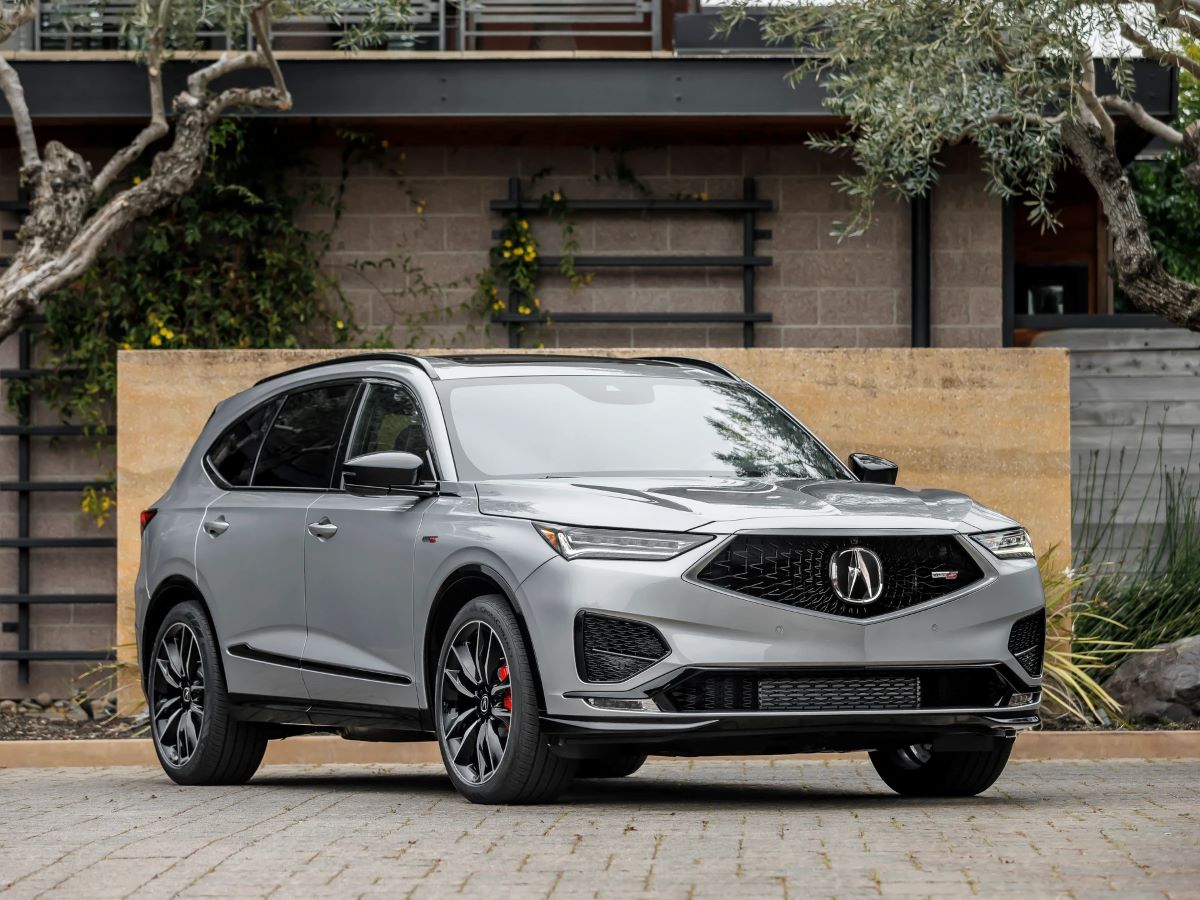
4. Acura MDX
The Acura MDX is often praised for its balanced blend of performance, technology, and luxury, with the HVAC system being a subtle yet impactful contributor to the vehicle’s refinement. Acura employs electronically controlled brushless motors in the MDX’s blower units, reducing the mechanical noise typically heard during startup.
These motors run with minimal friction, avoiding the harsh sounds produced by older, brushed motors. The blower housing itself is insulated with sound-dampening materials, effectively containing motor noise and preventing it from resonating through the cabin.
Furthermore, the air ducts in the MDX are engineered to ensure smooth airflow. Acura designers have implemented aerodynamic principles to shape the vents and ducts, reducing turbulence and the associated whooshing or whistling sounds.
These ducts are lined internally with vibration-absorbing foams, which prevent rattling and further muffle blower noise. This design consideration is crucial during startup when airflow patterns change suddenly and can otherwise generate disruptive noises.
The MDX’s multi-zone climate control system also helps maintain low blower speeds by allowing passengers to set personalized temperature preferences. This reduces the need for sudden, high-velocity airflow bursts that generate noise. The system’s software manages blower speed transitions carefully, avoiding abrupt accelerations that can make the blower startup sound harsh. Instead, the air is introduced smoothly, contributing to a quiet and comfortable cabin environment.
Lastly, Acura’s attention to detail extends to the overall cabin acoustics. The MDX uses extensive sound-absorbing materials throughout the interior, including the dashboard, doors, and floor, which work together to reduce the intrusion of HVAC noise.
These elements, combined with the sophisticated blower design and duct engineering, ensure that the HVAC system startup remains unobtrusive and pleasant, supporting the MDX’s reputation as a refined and enjoyable luxury SUV.
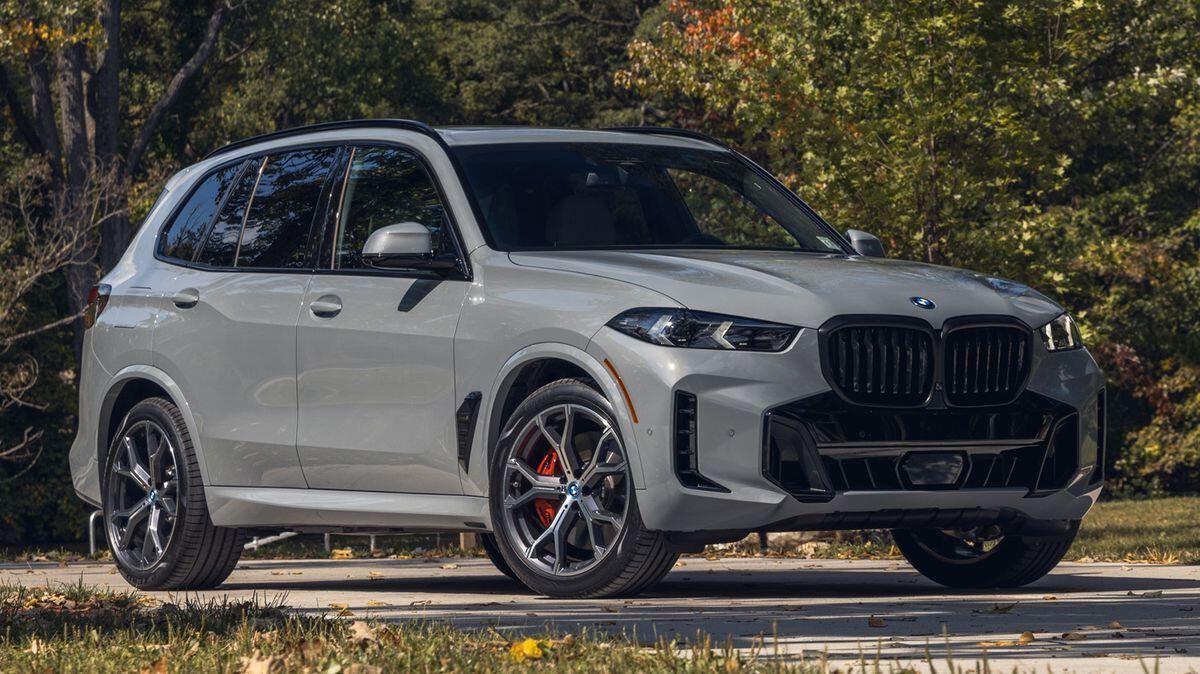
5. BMW X5
The BMW X5 has long been celebrated for its sporty yet luxurious character, and its HVAC system reflects this dual personality by offering quiet, efficient performance without sacrificing power. BMW incorporates high-precision blower motors that use electronically controlled speeds to minimize startup noise.
These motors are mounted with vibration isolators and encased in sound-absorbing materials that drastically reduce mechanical noise during power-on. The blower motor’s smooth acceleration prevents the sudden, sharp noises often associated with older HVAC systems, delivering a seamless transition from off to airflow.
Airflow management is equally crucial in the X5’s HVAC system design. The ducts are carefully engineered to optimize laminar flow, minimizing turbulence that can cause whistling or rattling sounds.
BMW uses advanced computational modeling to refine the duct shapes and junctions, ensuring the air moves smoothly and quietly through the system. The materials used in the ducts include acoustic foams and composites designed to absorb sound waves generated by moving air.
The X5 also benefits from an advanced multi-zone climate control system that helps distribute airflow efficiently, reducing the need for the blower to operate at high speeds suddenly. T
he system’s control software gradually increases or decreases blower speed, eliminating abrupt airflow surges and their associated noise. This creates a calming effect in the cabin where HVAC startup noise is barely perceptible even in very quiet environments.
Finally, BMW’s holistic approach to cabin quietness includes the use of dense soundproofing in the firewall, floor, and roof, which complements the HVAC system’s quiet design. The X5’s interior materials are chosen not only for luxury but also for their acoustic properties, working together to muffle any sounds produced by mechanical systems.
This thoughtful integration of motor technology, ductwork, software controls, and cabin materials positions the BMW X5 as one of the best SUVs for quiet HVAC startups, delivering a premium, peaceful driving experience.
5 SUVs with Noisy HVAC Blowers
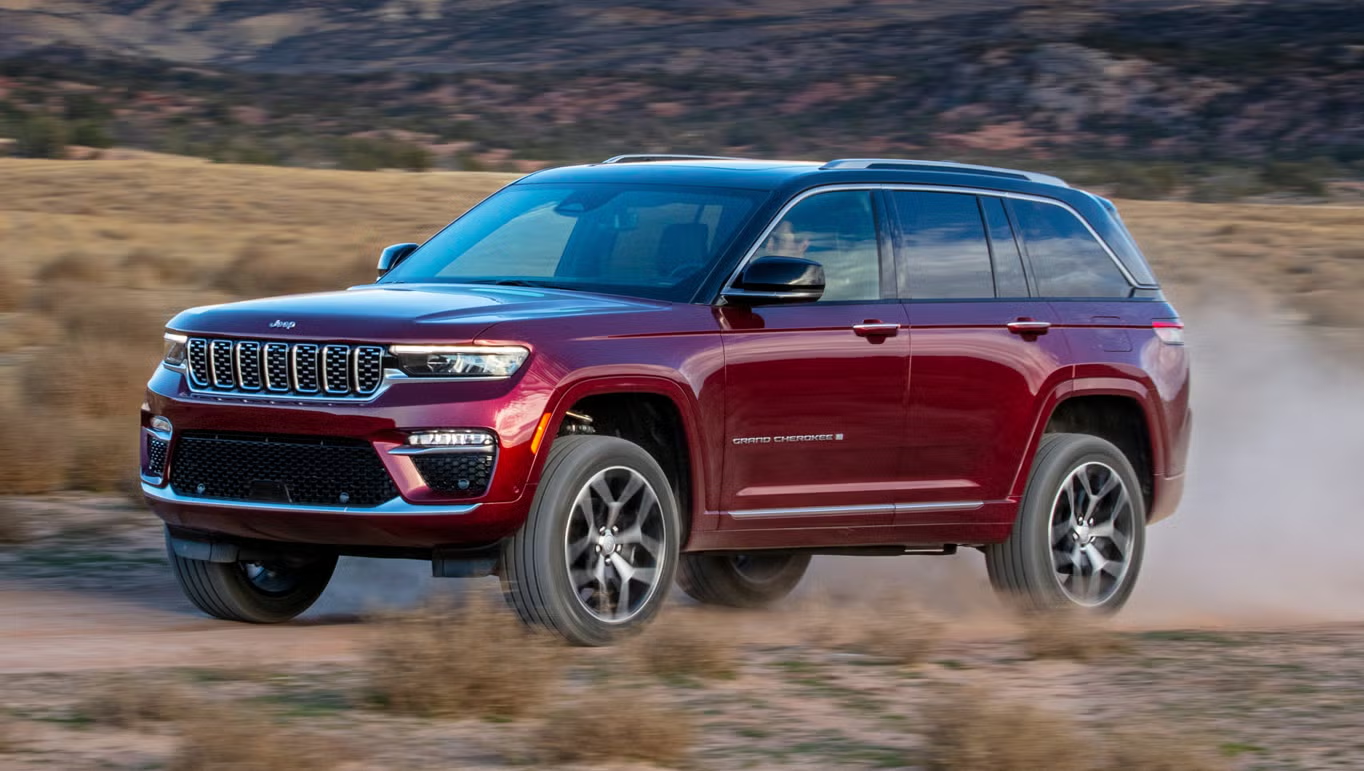
1. Jeep Grand Cherokee
The Jeep Grand Cherokee, known for its rugged off-road capabilities and bold styling, unfortunately, has received criticism for its HVAC blower noise during startup, which can be quite intrusive. The primary cause of the noise stems from an older generation blower motor design that relies on traditional brushed motors rather than the quieter brushless motors used by many luxury brands.
Brushed motors inherently create more friction and mechanical noise, especially during startup when the motor rapidly accelerates from rest. This results in a noticeable buzzing or grinding sound that some drivers find distracting, particularly in a vehicle that otherwise tries to balance refinement with off-road toughness.
Adding to the noise challenge is the design of the ductwork and vents within the Grand Cherokee’s HVAC system. Unlike newer designs that emphasize smooth airflow and use sound-absorbing linings, the Grand Cherokee’s ducts can sometimes produce turbulent airflow, especially when the blower speeds up suddenly.
This turbulence causes high-pitched whistles or hissing noises that are quite audible in a quiet cabin. The use of harder plastic materials in the ducting, as opposed to softer, noise-absorbing composites, means vibrations and rattles can travel through the system and into the passenger compartment. This combination of mechanical and airflow noise makes the blower startup notably loud.
Furthermore, the Jeep’s multi-zone climate system can contribute to the noise when there is a need for rapid temperature adjustment or defrosting, which prompts the blower motor to ramp up quickly. Unlike the gradual ramp-up systems found in quieter SUVs, the Grand Cherokee’s blower often jolts into higher speeds abruptly, amplifying the noise as the motor struggles to adjust airflow fast enough.
This sudden change in blower speed can exacerbate mechanical vibrations and increase the volume of turbulent airflow sounds, making the HVAC system feel aggressive rather than refined.
The cabin design and insulation materials also do little to help muffle this noise. Jeep’s focus on durability and utility sometimes comes at the expense of luxury-level soundproofing. Hard plastics, less dense insulation, and door seals that prioritize weather resistance over sound isolation mean that blower noise is more easily transmitted into the cabin.
For drivers and passengers who spend a lot of time in the vehicle, especially during colder or hotter months when HVAC use is frequent, this persistent noise can detract from the overall comfort and enjoyment of the Grand Cherokee’s otherwise capable package.
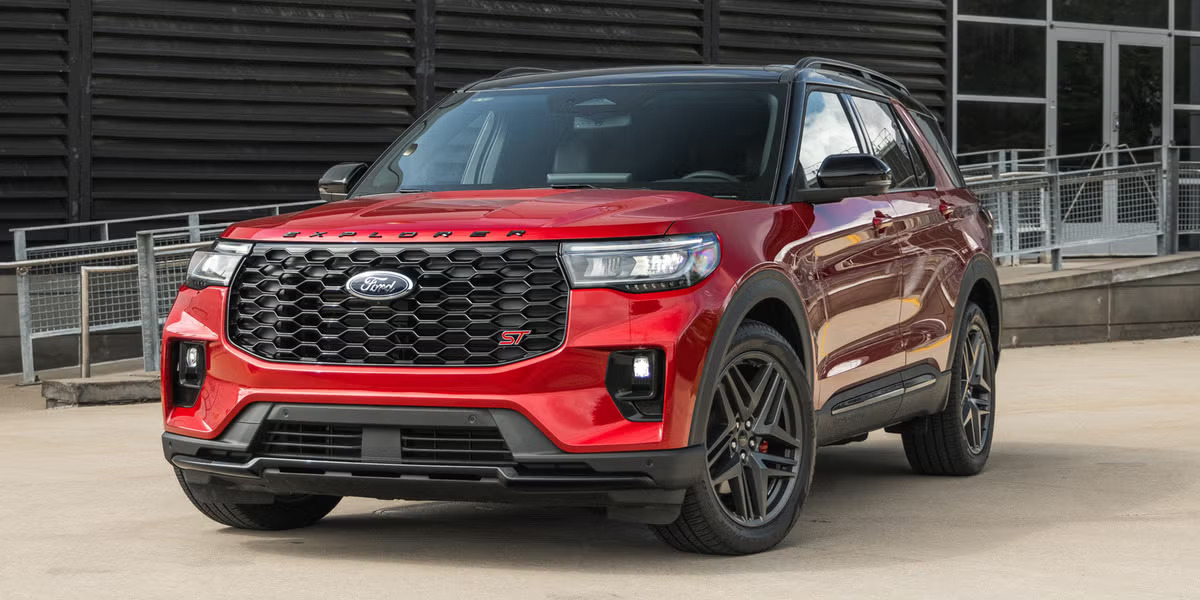
2. Ford Explorer
The Ford Explorer is one of the most popular midsize SUVs on the market, but it has been reported to have issues with noisy HVAC blowers, especially during system startup. The root cause lies partly in the HVAC blower motor design, which uses a standard brushed motor without advanced noise suppression technologies.
This traditional motor design is prone to producing a noticeable hum or buzzing sound when starting up, particularly if the motor is not perfectly maintained or begins to wear. Over time, the brushes within the motor can degrade, increasing noise levels and sometimes creating an unpleasant mechanical growl or grind that becomes difficult to ignore.
In addition to motor noise, the Explorer’s air duct system is another contributing factor to the loud HVAC blower startup. The air vents and ducts are designed with functionality in mind but lack the fine-tuning needed to minimize turbulent airflow noise. During the initial blast of air when the system powers on, the air rushing through rigid ducts can cause whistling or hissing noises.
The plastic duct materials are often thin, which means they can vibrate or rattle, further amplifying the noise inside the cabin. These vibrations can be particularly noticeable when the blower motor speed is increased rapidly, such as when switching from a low setting to a high setting.
The climate control software in the Explorer doesn’t always manage blower speed transitions as smoothly as some competitors, which exacerbates the noise issue. Instead of a gradual ramp-up, the system sometimes jumps quickly to higher blower speeds, creating an abrupt surge in airflow noise.
This sudden noise can be startling and reduces the sense of refinement inside what is otherwise a well-appointed SUV. For families and commuters who rely on quiet cabins for conversation or relaxation, this noisy startup can be a source of frustration.
Finally, the cabin insulation and soundproofing materials in the Explorer, while adequate for road noise and engine sounds, are less effective at dampening HVAC system noises. The use of harder plastics and thinner sound barriers means that blower noise travels easily throughout the cabin.
Passengers seated near the vents often report more noticeable blower sounds, highlighting how the design and placement of HVAC components contribute to the overall noise profile. While the Explorer remains a strong contender in the midsize SUV category, its noisy HVAC blower startup is a drawback for those who prioritize quietness and comfort.
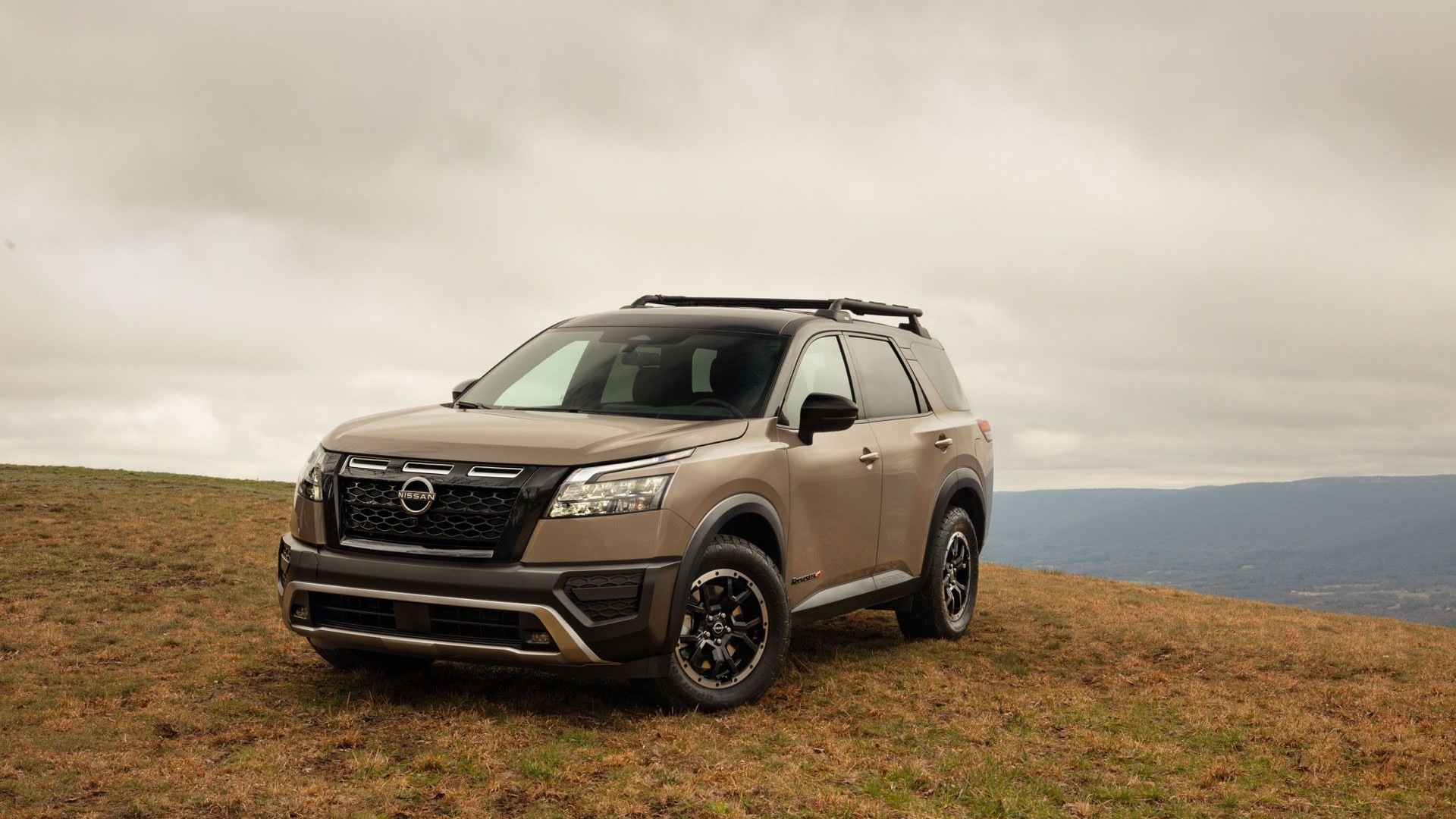
3. Nissan Pathfinder
The Nissan Pathfinder offers a solid package of space, power, and affordability, but one area where it has fallen short is the noise generated by its HVAC blower at startup. The Pathfinder’s blower motor relies on an older design without the advanced noise reduction technology increasingly common in premium models.
The motor produces a pronounced mechanical whine and vibration during startup, which is particularly noticeable in a quiet cabin or when the blower is first activated after being off. This whine is caused by the motor brushes making contact with the commutator, a normal characteristic of brushed motors but an unpleasant one for drivers expecting a quiet start.
Additionally, the Pathfinder’s HVAC duct system contributes to the noisy blower experience. The ducts are constructed from relatively rigid plastic materials that don’t have much sound absorption. When air is forced through these ducts at higher speeds, it creates a rushing noise that combines with the motor’s mechanical sounds.
The airflow can also cause rattling noises at some vents if the plastic components have loosened slightly due to age or wear. The overall effect is an HVAC startup that can sound harsh and distracting, especially during cold mornings or hot afternoons when the system is used frequently.
The climate control software’s management of blower speed changes can also be abrupt, further increasing noise levels. Instead of a soft, gradual increase in blower speed, the Pathfinder’s system sometimes jumps quickly to a high setting, causing a sudden loud burst of air and motor noise.
This lack of finesse in controlling the blower motor speed ramp-up results in a more aggressive and less comfortable cabin environment. Passengers often notice the difference immediately, especially in otherwise quiet driving conditions.
Lastly, the Pathfinder’s cabin design does not sufficiently mitigate these noises. The sound insulation is more focused on blocking engine and road noise, with less emphasis on internal mechanical sounds like HVAC blower noise.
As a result, the startup noise of the blower is transmitted easily through the interior, particularly to front-seat occupants who are closest to the vents. While the Pathfinder offers great value and utility, the noisy HVAC blower startup can be a significant downside for those seeking a more refined driving experience.
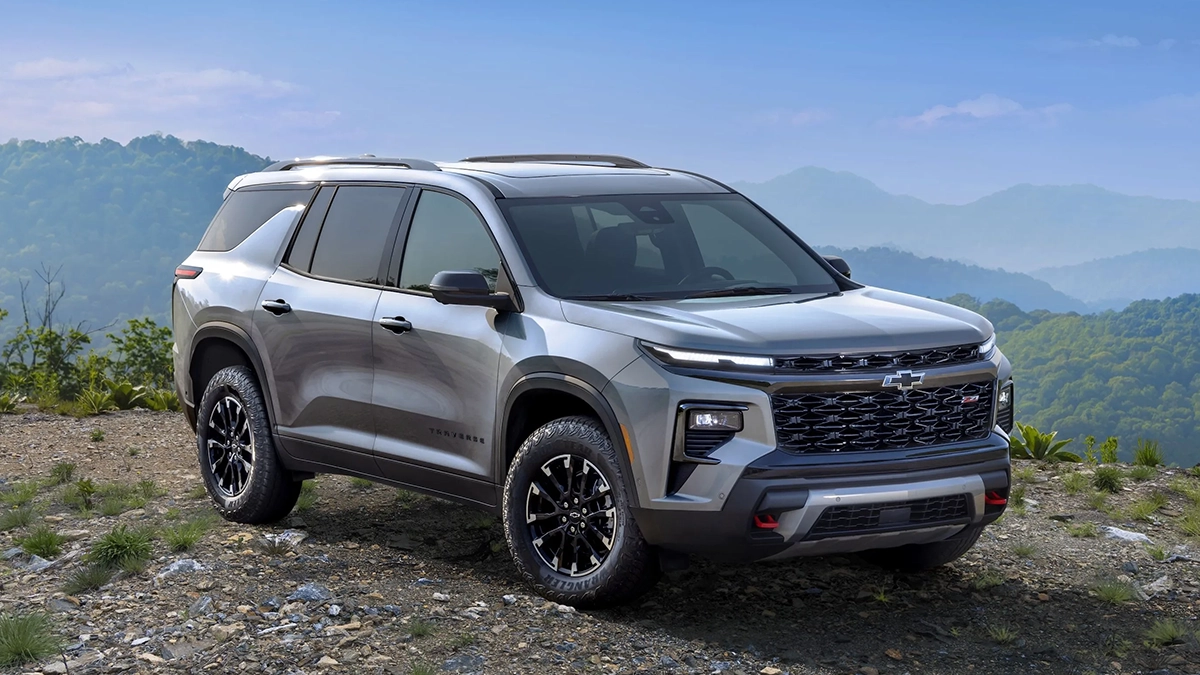
4. Chevrolet Traverse
The Chevrolet Traverse is a popular family SUV offering spacious seating and strong performance, but its HVAC blower noise during startup has been a common complaint among owners.
The root cause of the noise is the use of a relatively basic blower motor design that lacks the advanced noise-damping and brushless motor technology found in quieter competitors. This results in a distinct buzzing or humming sound during the initial startup phase, which can be quite loud in a well-insulated cabin or when the vehicle is at a standstill with minimal external noise.
The Traverse’s HVAC ductwork also plays a role in amplifying blower noise. The air ducts, while functional, have relatively sharp bends and rigid materials that promote turbulent airflow, particularly when the blower speed changes rapidly.
This turbulence generates audible hissing and whistling sounds that add to the perception of a noisy blower system. The plastic ducts also have minimal sound-absorbing lining, which means vibration and resonance can occur when the blower motor accelerates, further increasing noise levels inside the cabin.
Another factor contributing to the noisy blower experience is the climate control system’s responsiveness. The Traverse’s system tends to increase blower speed in noticeable steps rather than a continuous, smooth progression. This means that sudden jumps in airflow can create bursts of noise that catch occupants off guard and disrupt the cabin’s calm atmosphere.
Unlike vehicles that employ intelligent ramp-up algorithms to gradually introduce airflow, the Traverse’s HVAC system is less refined, causing a more jarring auditory experience.
Finally, while the Traverse’s cabin is well-appointed with comfort in mind, its acoustic engineering isn’t as advanced as in some luxury rivals. The soundproofing materials are primarily targeted at road and wind noise, with less focus on dampening internal mechanical sounds like blower motor noise. This leads to a cabin environment where the noisy HVAC blower startup is more noticeable and can detract from the overall comfort, especially on longer journeys where consistent climate control is necessary.
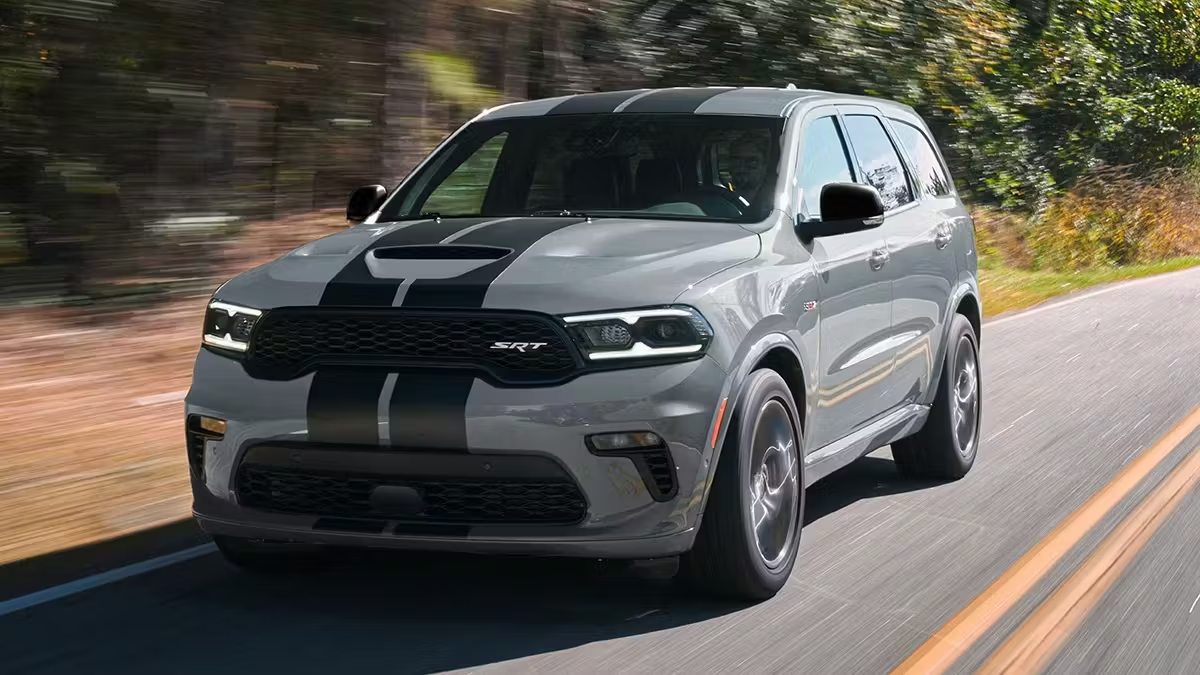
5. Dodge Durango
The Dodge Durango, a powerful SUV with a focus on performance and towing capacity, struggles with an HVAC blower that is noticeably noisy during startup. This is largely due to its blower motor technology, which employs a brushed motor design that generates mechanical noise through brush friction and commutator contact points.
The startup phase is particularly loud, as the motor rapidly spins up to the commanded speed, creating a distinctive buzzing or grinding sound that many occupants find unpleasant in an otherwise quiet cabin environment.
Compounding the issue is the Durango’s HVAC duct design, which does not prioritize acoustic dampening. The ducts are constructed from hard plastic materials without extensive sound insulation or vibration-absorbing linings.
When the blower motor increases airflow suddenly, air turbulence within these ducts produces hissing, whistling, or rattling noises. These noises are transmitted directly into the cabin because the plastic ducts act as resonators, amplifying mechanical sounds rather than absorbing them.
The Durango’s climate control system also lacks the refined ramp-up control seen in quieter SUVs. Blower speed transitions are often abrupt, causing sudden surges of airflow that make the blower startup noise more pronounced.
This aggressive blower behavior contrasts with the smooth, gradual airflow increases found in more upscale models, leading to a harsher auditory environment inside the cabin.
Lastly, the interior sound insulation in the Durango is more utilitarian, focusing on durability and road noise reduction rather than fine-tuned sound absorption.
Hard plastics, less dense carpeting, and fewer acoustic panels mean that HVAC blower noises are less contained and more easily heard by occupants. This results in a cabin environment where the noisy blower startup can be a persistent annoyance, particularly for those who prioritize quietness and comfort during their drives.
ALSO READ: 5 Trucks With Smooth Ride Quality and 5 That Rattle on Every Bump
The noise produced by an SUV’s HVAC blower during startup might seem like a small detail, but it can significantly impact the overall comfort, perceived quality, and enjoyment of a vehicle.
This article’s exploration of five SUVs with the quietest HVAC startups alongside five with noisier blowers reveals just how much engineering, materials, and technology matter in shaping the acoustic environment inside the cabin. For drivers and passengers, these differences can be the line between a peaceful, luxurious experience and one punctuated by distracting mechanical noise.
Among the quietest performers, SUVs like the Lexus RX, Audi Q7, Volvo XC90, Acura MDX, and BMW X5 exemplify how manufacturers focused on refinement carefully engineer every aspect of the HVAC system.
From the use of advanced brushless or electronically commutated motors that minimize mechanical friction and vibration, to the design of ductwork that smooths airflow and reduces turbulence, these vehicles represent a high standard in acoustic engineering.
Their cabins benefit not only from superior HVAC components but also from extensive soundproofing, vibration-damping materials, and intelligent climate control software that gradually ramps blower speeds. This multifaceted approach results in HVAC startups that are nearly imperceptible, maintaining the tranquil atmosphere that luxury SUVs strive to provide.
Conversely, the noisier blowers found in models such as the Jeep Grand Cherokee, Ford Explorer, Nissan Pathfinder, Chevrolet Traverse, and Dodge Durango highlight some of the challenges faced by SUVs that prioritize other attributes like ruggedness, affordability, or performance.
These vehicles often use older brushed motor designs that inherently produce more mechanical noise. Their duct systems and cabin materials may not adequately absorb or muffle sound, allowing blower startup noise to become more pronounced.
Moreover, less sophisticated climate control software can lead to abrupt changes in blower speed, causing sudden surges of airflow noise that detract from cabin comfort.
This disparity underscores the importance of paying attention to HVAC noise when selecting an SUV, especially for buyers who spend significant time on the road or highly value a quiet, relaxing cabin environment. While power, style, and technology are critical, the subtle yet persistent noise of the HVAC system can influence daily driving pleasure more than many realize.
A quiet HVAC system not only enhances comfort but also contributes to a vehicle’s overall perception of quality and refinement, making it a key factor for discerning buyers.
From a technical standpoint, the ongoing evolution of HVAC blower technology points to a future where quiet operation becomes the norm rather than the exception.
Brushless motor designs, aerodynamic airflow pathways, improved acoustic materials, and intelligent climate control algorithms will continue to advance, enabling more SUVs to offer whisper-quiet HVAC startups. This progression will benefit drivers across all segments, raising expectations for noise performance even in mainstream and utility-focused vehicles.
In conclusion, the quietness or noisiness of an SUV’s HVAC blower startup is a reflection of broader engineering philosophies and priorities. Luxury brands that invest in sophisticated HVAC systems deliver not just climate comfort but also auditory comfort, reinforcing their premium positioning.
Meanwhile, SUVs with noisier blowers remind consumers that HVAC noise can still be an overlooked issue, especially in models that emphasize toughness or affordability over refinement.
For anyone considering an SUV purchase, experiencing the HVAC system firsthand and noting blower noise during startup is a worthwhile step toward finding a vehicle that truly suits their comfort needs. Ultimately, the sound of the HVAC blower is more than background noise—it’s part of the vehicle’s personality and the driver’s sensory experience.
Choosing an SUV with a quiet HVAC startup is choosing peace of mind and comfort for every journey, no matter how long or short. As technology continues to improve, the hope is that all SUVs will one day offer an HVAC experience that is as quiet and seamless as the ride itself.

